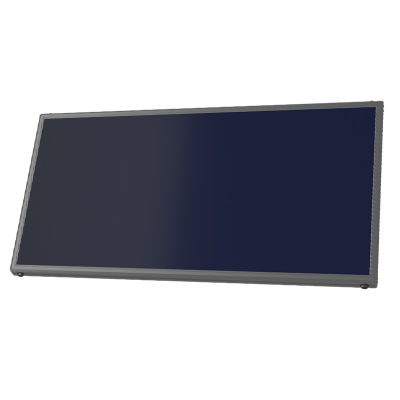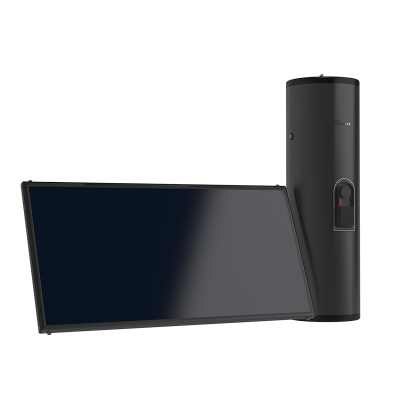Everything You Need to Know About PVT Solar Systems: FAQ for Commercial Users
Everything You Need to Know About PVT Solar Systems: FAQ for Commercial Users
PVT systems are gaining traction in the renewable energy space — but many still have questions. This guide answers the most common ones, clearly and simply.
If you’re managing a commercial building or planning a renewable energy upgrade, chances are you’ve heard of PVT solar systems. These hybrid panels generate both electricity and heat — offering a unique solution to meet two energy needs with one installation.
Below are answers to the most frequently asked questions by engineers, building owners, and project developers.
1. What is a PVT solar panel?
A PVT (Photovoltaic Thermal) panel is a hybrid solar technology that combines two functions in a single unit:
Photovoltaic cells convert sunlight into electricity (like regular PV panels)
Thermal absorbers behind the PV cells collect waste heat and transfer it to a fluid (typically water or glycol)
The result? One panel provides both power and hot water or heating energy — especially useful for commercial buildings that consume both types of energy year-round.
2. How is PVT different from traditional PV?
While both technologies use photovoltaic cells to generate electricity, the main difference lies in what happens to the heat.
| Feature | Traditional PV | PVT Hybrid |
|---|---|---|
| Output | Electricity only | Electricity + Heat |
| Efficiency | 15–22% | Up to 70% total |
| Panel Cooling | None (can overheat) | Actively cooled via thermal circuit |
| Use Case | General solar applications | Buildings using power + hot water/heating |
PVT systems also tend to have more consistent performance across seasons because the thermal system cools the PV cells, maintaining higher efficiency.
3. Is PVT worth it for commercial buildings?
Yes — especially if your building uses both electricity and heat. Common applications include:
Hotels and resorts: lighting, HVAC, hot water
Hospitals: constant electric and thermal demand
Schools and campuses: daytime power + heating
Factories: equipment + process heat
The return on investment (ROI) is often faster than PV-only because you're displacing two utility costs — electricity and gas/oil/boiler heating. Depending on location and system size, ROI can be reached within 5–7 years.
4. What is the lifespan of a PVT system?
PVT systems generally last between 25–30 years — similar to traditional PV panels.
The PV portion may have a warranty of 25 years (standard), while thermal components like pumps and heat exchangers may require service or replacement every 8–15 years depending on system use.
Well-maintained PVT systems can match or exceed the lifespan of a standalone PV array, especially when integrated with a heat pump or thermal storage.
5. How much does a PVT system cost?
As a rule of thumb, PVT panels cost about 10–25% more than standard PV panels, depending on the technology and installation scale.
Cost Breakdown Example (Commercial Rooftop):
PVT panel (installed): $500–$700 per m²
Thermal storage tank: $2,000–$6,000 depending on capacity
Heat pump (if included): $5,000–$15,000+
However, since you’re generating two energy streams from the same surface, the system yields higher total energy savings per square meter — especially valuable for buildings with limited roof space.
[Get a quote for your building →]
6. Does PVT require more maintenance?
Yes — but only slightly.
Most of the PV maintenance is the same: panel cleaning, inverter checks, cabling inspections.
The thermal side (heat transfer system) requires:
Annual check of fluid levels and pressure
Flushing or replacing antifreeze every 3–5 years
Inspection of circulation pumps and sensors
In commercial setups, it’s best to schedule a full system service annually. Automated monitoring systems can track flow rates and alert to anomalies.
7. Can PVT be installed with a heat pump?
Absolutely — this is one of the most effective hybrid energy setups.
The heat captured by PVT panels can feed directly into a heat pump's low-temperature input, improving its efficiency and reducing the electricity needed to run it.
Common configurations:
Brine-to-water heat pump + PVT collector loop
Air-source heat pump + PVT electric support
PVT + buffer tank + smart controller
Combined systems like this are already standard in parts of Germany and the Netherlands for net-zero residential and commercial buildings.
Still have questions?
PVT systems are a smart, flexible, and future-ready solution for buildings that consume both electricity and heat. With the right setup and maintenance plan, they offer superior performance, better space utilization, and stronger energy independence.
Got a project in mind? Reach out to our team and we’ll help you assess whether a dual-output PVT system is right for your building.




